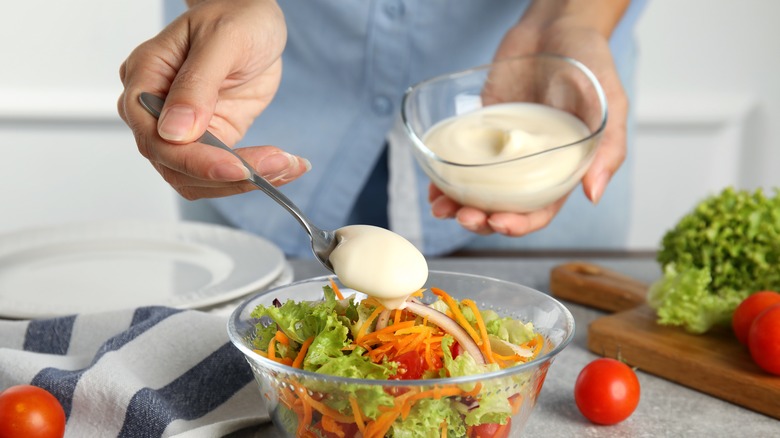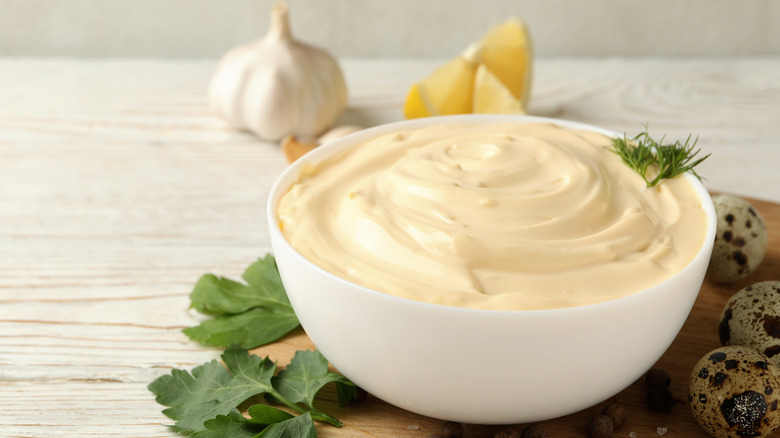Here's Why The Price Of Mayonnaise Is Rising Because Of One Ingredient
As USA Today reported, grocery prices have risen more than 13% over the past 12 months, and overall market volatility has yet to stabilize. From eggs to milk to various proteins, a myriad of factors can influence consumer food prices. As seen recently with eggs, another price increase was due to an animal virus, according to Food Business News. These types of unforeseen factors can cause an economic roller coaster to seem even more stomach turning.
When price surges hit commonly used ingredients, it's hard to avoid the wallet pinch. An ingredient, like mayonnaise, can seemingly go in and on everything. From that chicken salad recipe to a dip for fries to even a coating to keep fish moist, the reality is that the creamy condiment has a multitude of uses. As cents turn into dollars on price tags, consumers may not have another option in lieu of the ingredient. According to Bloomberg, the price of mayonnaise — both for consumers and businesses — has increased. While percentages vary based on factors like location, the reality is that mayonnaise costs between 5% and 10% more. Uncovering the why behind this price surge, however, can be a little more difficult to separate.
An emulsifier is driving up mayonnaise costs
While a sandwich may not be complete without a slathering of mayonnaise, the higher cost for that jar has some shoppers questioning the reasoning for the change. Given that mayonnaise is basically a combination of an oil, egg yolk, and an acid, the simple condiment is at the mercy of the ingredients' availability. As Cheapism.com stated recently, soybean oil prices have increased, which in turn causes mayonnaise prices to rise. Regardless of the reasoning for the soybean oil cost, the emulfiser is essential to mayonnaise, and therefore the cost is absorbed in the final price.
As Bloomberg reported, not only does the soybean oil component impact pricing, but the surge in egg costs impacts the jar on the shelf, too. Although some brands have tried to hedge on the pricing volatility, there is no avoiding the need to pass on the expense to consumers. If consumers choose to demand the product, the supply and cost will reflect that purchase choice.
Even though a homemade mayonnaise recipe can be relatively straightforward, consumers may prefer the convenience of buying it pre-made. Until the price exceeds what consumers are willing to pay, you may want to use your jar of mayonnaise sparingly.

